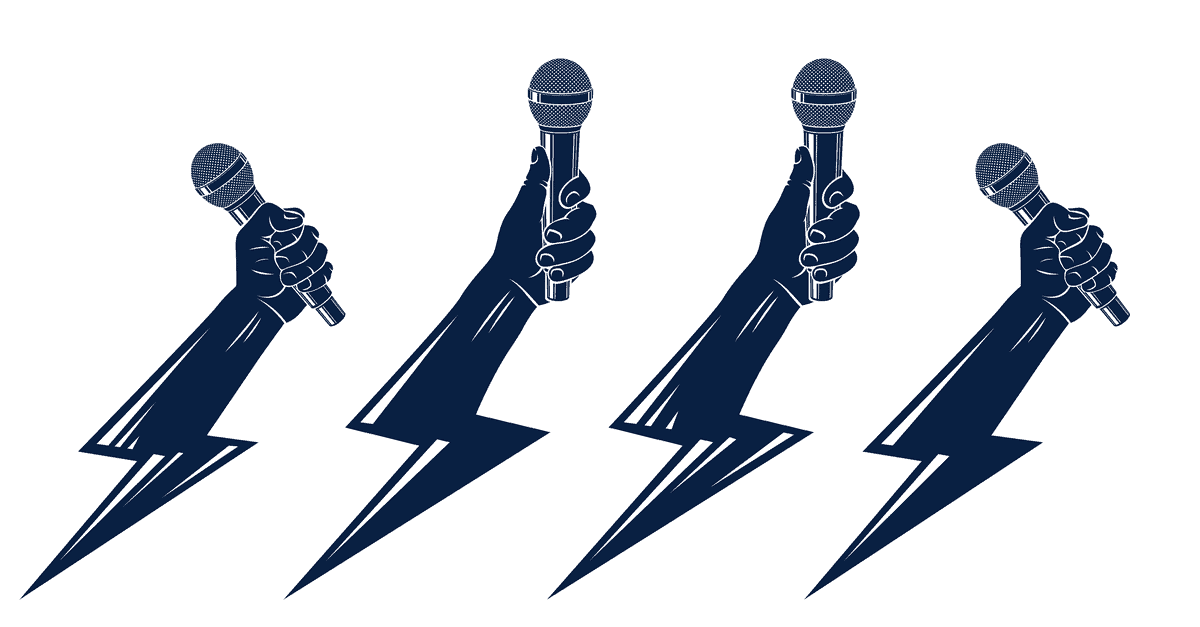
Stop Talking So Much And Start “Washing The Dishes”
Written By: Gina Trimarco
How Improv Comedians Engage An Audience With Silence
Silence is golden on a comedy stage, just like it is on a sales stage. When the players don’t know what to verbally say to thoughtfully engage an audience, saying nothing at all will call the audience to physically lean in, as if they are straining to hear what they can’t.
Doing Something Instead of Talking About Doing Something
As an improv comedy trainer and show director, I often instructed my students and performers to “wash the dishes” on stage when they got “stuck” and were unable to quickly respond to an audience suggestion.
We refer to this as “Do something (on stage) instead of talking about doing something” because there’s nothing worse on stage than a “talking head”.
How Improv Comedians Create Magic
For those unfamiliar with improv comedy, the performers, also referred to as players, collaborate with each other as a team to create comedic content without a script from audience suggestions.
What many observers don’t know is that the players do follow frameworks to quickly create the “magic” after receiving ideas from the audience and each other.
These different frameworks are called “games” and there are many to choose from and master, such as guessing games that require the performers to read body language and subtle verbal hints to guess something the audience suggested while the player was in another room and couldn’t hear.
It takes a very concentrated and intentional effort to pay attention to the other performers on stage who are trying to help the other performer guess correctly without asking a million questions, which would ultimately bore the audience when the goal is to engage them.
Read The Room: Two Types of Audiences
Even more critical is their ability to read what kind of audience they are performing to within the first 5 minutes of a 50-minute show.
There are typically two types of audiences attending a live performance of an audience-interactive improv show.
Cerebral Audience:
They prefer quick intellectual wit that doesn’t feel like a bunch of puns or one-liners are being dished out; they also appreciate and are wired for more complex scenarios.
Physicality Audience:
They prefer comedy derived from physical movement, along the lines of slapstick. This audience doesn’t want to think very hard and can sometimes be a lazy, “make me laugh” audience.
Two very different audiences, with pros and cons for both.
Use Spatial Activity To Engage Your Audience
Back to the “washing dishes” thing. The act of doing something physical on stage without saying a word is very powerful. Early on, I would teach improv students to understand how to use spatial activities to engage an audience.
They would learn how to walk through the stage space and paint the picture for the audience of where they physically were.
This required them to know how to pick up and use objects that didn’t actually exist. Yes, they would pretend to hold a phone or put on a jacket that the audience couldn’t actually see with their eyes; a form of pantomime.
If done really well, with confidence, eventually the audience would start to visualize everything and would quickly determine the location without a word ever being said by the performers.
What Does This Have To Do With Sales?
Silence is golden on a comedy stage, just like it is on a sales stage. The brain is lazy and loves short cuts (heuristics) to understanding the environment.
There are two goals behind “wash the dishes” that can be accomplished simultaneously:
1) It helps the audience focus without them realizing it.
2) It helps the performer maintain emotional control without the audience knowing they are uncertain of what to do in the moment.
Prompt Your Audience to Lean In
When the players don’t know what to verbally say to thoughtfully engage an audience, saying nothing at all will call the audience to physically lean in, as if they are straining to hear what they can’t.
As humans, it’s instinctual, even on video calls in business. I’ve watched people (and have done it myself) physically move closer to the camera because the audio was bad.
When people physically lean in, they are emotionally leaning in as well.
And if the performer, or sales person, is demonstrating something physical without speaking, the audience (especially for a “physicality” audience member) or buyer, will start to focus on and observe the task at hand.
Movement Reduces Cognitive Load
Studies show that creative people use bodily movement to help overcome “blocks”.
When the players channel their uncertainty and anxiety into doing something (taking action) versus speaking incessantly (talking about doing something), the performer’s lazy brain doesn’t have to work as hard.
It slows the performer (or salesperson) down, which lessens the cognitive load on his or her brain. In turn, this leads to more creativity that ultimately “wows” the audience.
As salespeople, we talk too much. We talk past the sale. Our “fight or flight” brains kick in due to our fear of rejection and failure.
When you feel this moment coming on, talk less and DO something, like “washing the dishes”.
The Improvised Sales Intelligence™️ Book of Play gives you the tools, tactics, and techniques to become a more effective and agile communicator in spontaneous sales conversations. Download the FREE Book of Play here.
About the author
Gina Trimarco
Gina Trimarco is a Master Trainer and leadership strategist who helps organizations re-humanize relationships…
Get FREE Sales Training Delivered to Your Inbox
Join more than 360,000 professionals who get our weekly newsletter.
Related Articles

Learn Online
Self-paced courses from the
world's top sales experts

Virtual Training
Live, interactive instruction in small
groups with master trainers

Coaching
One-to-one personalized coaching
focused on your unique situation






